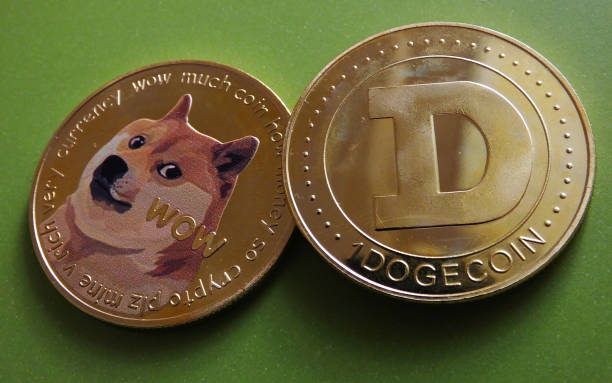Bitcoin is often compared with gold, and one of the chief factors of similarity it the way they’re both obtained. Similarly to gold, new Bitcoins are created via the process called “mining.”
In fact, Bitcoin mining has a two-fold purpose: it allows for the creation of new coins and facilitates the processing of transactions in the network.
Another parallel with the precious metal is that there’s a limited amount of Bitcoins that can ever be mined: no more than 21 mln coins. As of 2017, nearly 17 mln Bitcoins have already been mined.
Mining can be quite a competitive task as new Bitcoins are created at a predictable and fixed rate. Those rates have been defined by Satoshi Nakamoto, the creator of Bitcoin, in the white paper published in 2008.
The more miners join the network, the more difficult it becomes to make a profit for each of them. Because of that, miners have to remain highly competitive to keep receiving Bitcoins as a reward for validating the transactions.
What you need to start mining
Bitcoin mining is the process of adding records of a new transaction to the Blockchain - the public ledger of all transactions that have ever taken place in the Bitcoin network.
New transactions are added in batches called “blocks” roughly every 10 minutes, hence the name Blockchain. The ledger is needed for the nodes of the Bitcoin network to always be able to confirm valid transactions.
In order to become a Bitcoin miner, a person first needs a computer and mining software - like the GUIMiner. This program uses the computer’s resources to perform complex mathematical calculations.
When any one miner succeeds in solving their math problem, they get to create a new block and receive a certain number of Bitcoins as a reward, known as “the block reward.”
Every 210,000 blocks, or, roughly, every four years, the block reward is halved. It started at 50 Bitcoin per block in 2009, and in 2014 it was halved to 25 Bitcoins per block.
However, mining on personal computers has only been feasible in the early years of Bitcoin. By now, the network is so competitive, that using specialized hardware is the only way to make a profit.
The first ASICs - or Application-Specific Integrated Circuits - were introduced in 2013, designed specifically for the purpose of mining from the start.
Despite the existence of such specialized equipment, the situation didn’t become easier for miners, as new, more efficient ASICs are released all the time. And the problem of paying for electricity bills is only exacerbated by the new, power-hungry hardware.
Nowadays there are many prominent companies which design and produce mining hardware. Among them, are Bitfury, Bitmain. You may also find used equipment on eBay or Amazon.
So, to recap, miners use their hardware to verify valid transactions, pack them into blocks, solve mathematical problems during the process which is called “hashing,” and, after getting a correct solution, add new blocks to the Blockchain.
What is ‘hashing’?
Bitcoin uses a cryptographic hash function SHA-256 for encryption. This algorithm allows you to take data of any size and turn it into a string of a specific, predefined size. The resulting string is called a “hash,” and the process of applying the hash function to random inputs is called “hashing.”
It’s impossible to predict what the hash of any one input will be until you actually calculate it. The goal of the miners is to keep feeding the hash function with different inputs until they get a specific hash value which is below a certain threshold, which is called the “difficulty” of network.
The difficulty is automatically adjusted every 2016 blocks - or, roughly, every 14 days - in accordance with the growing or shrinking combined computational power of the network.
If the network became more powerful over the last 2016 blocks, then the difficulty value is decreased to make it harder to find a valid hash and vice versa.
Considering the immense computational power that the Bitcoin network currently employs, it takes trillions of computer-generated guesses from all over the world until the right hash value is found by someone. And if you are the first to do it - congrats! You have just mined a block and got a reward of 12,5 Bitcoins.
Pitfalls to avoid in mining
As with any other activity, mining has some pitfalls to avoid. Let’s take a closer look at some mistakes usually made by newbie miners:
You shouldn’t start mining without preparations. Given that it is a highly competitive sphere, profitable mining requires thorough planning and preparation. Many examples can be found of people, who had bought too much hardware equipment without calculating all the costs of running it and the likely profit rates. After finding out that they can’t maintain profitable operations with their equipment, these unfortunate miners usually have to re-sell it at a large discount.
You also shouldn’t follow the hype and mine whatever coin that is the most trendy at the moment. From time to time, one coin or another will get overhyped, and a lot of new miners will start pouring in, driving the difficulty of its network up. As a result, mining becomes very hard for everyone, and almost no one manages to make a profit. This scenario has taken place recently with Ethereum, for example.
What you should do, is take good care of your PC. Mining places a huge load on the computer’s processors, which have to run at full capacity all the time. If done without proper care, it might cause hardware malfunctions.
All in all, mining is both a difficult and profitable business to get involved in. But if you’re going to try it - good luck to you!








